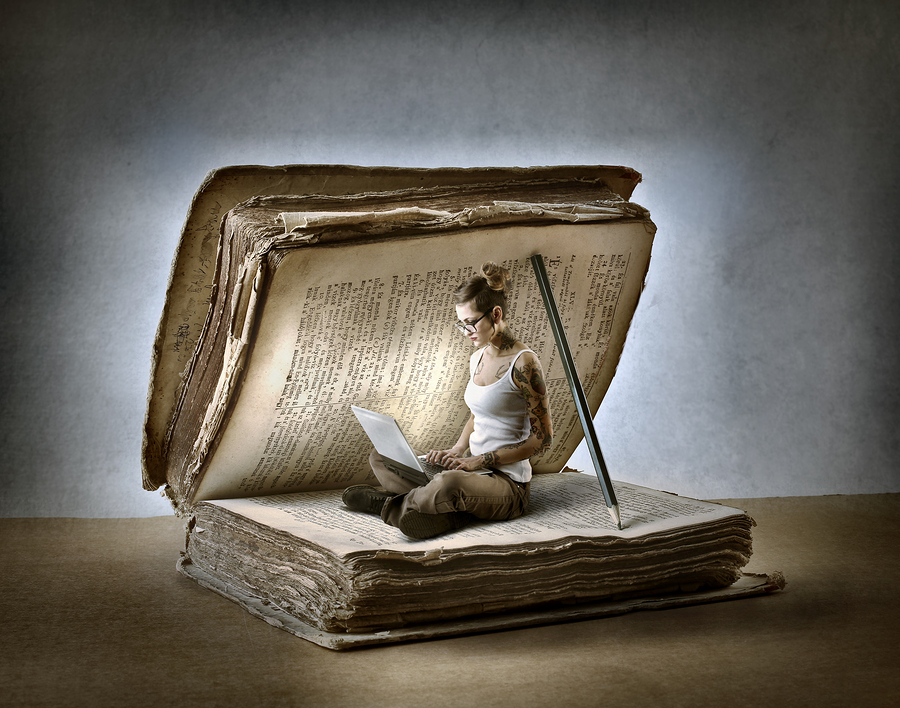The relationship between the arts and cognitive development has been studied and has gained strength in recent years for its benefits such as: imagination development, creativity, motivation to learn and the increase of social skills.
Photo: Bigstock
Engaging students into reading has been an uphill task for educators. At times, the problem is due to the lack of variety in the range of options offered to students and, at others, the lack of story appropriation, while, undoubtedly, poor reading habits also have an effect. On top of all this, having to read in a non-native language, such as English (or Spanish), can represent a barrier to the reading comprehension improvement process, which has implications for writing and vocabulary.
To address this issue, a project targeting high school students was developed, seeking to integrate reading with artistic expression, so that students could express the message of the reading material through art, appropriate the story, be motivated to continue reading and, at the same time, improve these skills.
The project is implemented every semester in the Level 6 English course. During this period, students read different literary short stories, which address a variety of topics, and complete comprehension exercises. As the last evaluation draws near, their assignment is to choose one of the stories, in particular a scene from the same, and portray it in a work of art, painting or drawing. We have been working on modifying the type of reading material available for students and the dynamic of the project itself. Students read four to six short stories and use the pastel drawing technique to create their art works.
“Integrating reading with artistic expression helps students take ownership of the story, motivate themselves to continue it and at the same time, improve their reading comprehension.”
To corroborate the project’s effectiveness, a small investigation was conducted consisting of a survey administered to measure students’ attitudes in terms of their motivation and perception of reading comprehension development. The students answered favorably, stating that the project motivated them to continue reading and improve their reading comprehension. The students who obtained the highest grades were those who did their best with their work of art, even if it was not particularly visually attractive. In this regard, using another approach is recommendable in which not only students’ perception is analyzed, but also their academic performance, with an experimental and a control group.
Studies of the relationship between the arts and cognitive development has gained ground over the past few years, given its invaluable benefits. Melnick, Witmer and Strickland (2008) note that cognitive science and neuroscience help to understand art as a powerful tool that enhances teaching and learning. Diverse studies, such as that of Smithrim and Upitis (2005), indicate that students who participate in the arts display greater academic achievements than their peers who are not involved in the arts, and obtain further benefits such as the development of their imagination, an enormous motivation to learn, creativity, lower dropout rates and an increase in social skills.
“We observed that students who obtained a better school performance were those who put more effort in their work of art, in spite of not being the work visually more attractive.”
More specific analyses have been executed on the influence of the arts on cognitive development, for example, Wandell, Dougherty, Ben-Shachar and Deutsch (2008) conducted a series of studies to determine the correlation between art education and the improvement of reading skills. They even worked with MRI images that enabled them to observe the parts of the brain related to the development of reading skills. On completing the study, they concluded that music in particular has a major impact on developing reading fluency.
Sharing successful cases would be extremely beneficial and help us to improve the teaching-learning processes and classroom resource configuration to ensure that students will no longer view reading as boring. I would like to invite you to experiment with art in language teaching and, above all, in developing students’ reading skills.
About the author
Juan Manuel Beltrán López is a full-time faculty member in the language department at Tec High School, Sonora Norte campus. He has experience in teaching English as a foreign language at different levels, from elementary school through college. His area of interest is the incorporation of technology into the classroom.
This article from Observatory of the Institute for the Future of Education may be shared under the terms of the license CC BY-NC-SA 4.0 
)
)



)
Corina Guadalupe Chávez Martínez
Corina Guadalupe Chávez Martínez
Corina Guadalupe Chávez Martínez